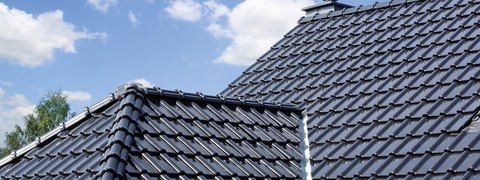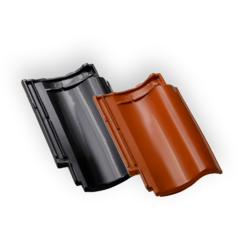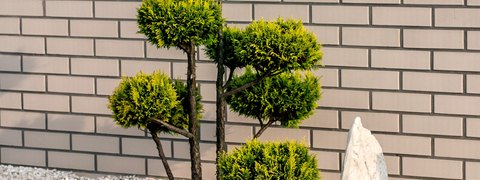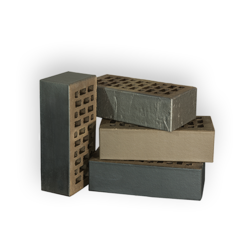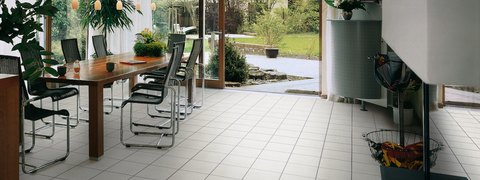The choice of colours is a matter of the investor's taste, but we encourage you to look at our completed objects. The photo gallery of projects – façade contains a lot of inspirations and ideas, maybe the photos included there will help you in selecting a specific solution.
Ceramic products, including clinker tiles, are environmentally friendly products not only because of the natural composition, but also due to their longevity. Ceramics is one of the most durable building materials. Once used in construction, it does not have to be replaced for a long time (100-150 years) and does not require frequent renovation. As a result, we avoid complicated maintenance works that harm the environment. What is more, using less durable materials would make it necessary to replace them even several times in this period – and consequently, it would require further manufacturing cycles. The production of Röben ceramics is as environmentally friendly as the products themselves. The tiles are fired in a tunnel gas furnace which is fuelled by natural gas – currently, the most environmentally friendly fuel in this type of production. The production at Röben plants meets all the requirements of environmental protection and other European standards, including those associated with CO2 emissions. In addition, the production process is environmentally friendly due to the secondary processing of waste – meal is produced from ceramic waste, which is later added to the production line or used to harden roads, squares, etc. In order to further reduce CO2 emissions, packaging of pallets containing Röben products is prepared so that no gas is needed for their welding. What is more, clay mining is performed with respect for the environment. The basic clay deposit is on site, next to the plant (the factory was built directly next to it), and the two other ones used by the Röben plant are located within a radius of up to several kilometres. As a result, there are no negative effects of longer transport.
Clinker bricks have a higher compressive strength, so that they can be used as a raw material (as opposed to face bricks) of building components, for example posts supporting the ceiling. Clinker bricks also have lower water absorption than face bricks, but it should be emphasized that both types of bricks are resistant to weather conditions, and thus both of them constitute an appropriate material for a durable and aesthetic façade or fence.
We always recommend using solid bricks to build the chimney, because it is particularly exposed to moisture. Frost resistance of the product is also important. You can read more about the principles of bricklaying chimneys in our guide for contractors.
The correct method of grouting is described in our guide for contractors (Grouting – tips). Please ask the contractor not to use the so-called sludging method (as in the case of bathroom ceramics) – it is faster, but it can permanently colour the tiles, so all aesthetics will be lost. The standard grout width is 8-10 mm. Depending on the type of brick / tile, other widths may sometimes be used to achieve the desired aesthetic effect.
Actually, you can use any of our clinker bricks to make a fireplace. You can also place clinker tiles on a structure made of another material. In order to achieve the described effect, we recommend one of the hand-moulded bricks, e.g. Moorbrand or Formback bricks. Photos showing the application of the bricks in the interiors can also be found on Facebook – in the Ceramic Inspirations profile.
The method of laying clinker tiles is described in the tip Laying clinker tiles. Before starting work, however, please consult a designer who, knowing the parameters of the used construction materials and the dimensions of the surface to be covered, will determine whether the OSB will support the weight of clinker tiles.
Clinker tiles can be used to finish walls in the interior and they are often applied in such situations. When it comes to flooring, clinker tiles are compressive and very durable, so they meet the requirements of the standard. However, insufficient abrasiveness may be a problem, not only of the tiles themselves, but above all of the grouts (standard tiles are laid with a 8-10 mm wide grout). Due to the absorbability of tiles, there may also be a problem with cleaning. If you still decide to opt for this solution, the layer of the screed should be laid evenly and the adhesive layer should be spread evenly and skilfully. To sum up, façade clinker tiles can be laid on the floors, but we recommend using stoneware tiles.
All clinker tiles available in our offer can be used to finish the chimney. You can select the colour of the roof or façade that meets your needs. You will find the information on adhering tiles in the tip Laying clinker tiles. However, we recommend to entrust such work to professionals who will know what materials to use.
We do not recommend mortars of any particular producer. It is important, however, that the chosen product should be specifically designed for grouting clinker. If you want to prevent white streaks from appearing on the façade, you should not only choose the appropriate mortar, but also the method of bricklaying. First of all, during the bricklaying process and immediately afterwards, the bricks must be protected against moisture. More information can be found in the tip How to avoid streaks.
In principle, it is possible to adhere the tiles directly to the mineral plaster, but the adhesive should be properly selected. It is best to contact the manufacturer of the plaster which is already laid, to get advice on which adhesive to choose in that case. You can read more about adhering the tiles in the tip Laying clinker tiles.
Essentially yes, because our company produces systemic solutions, which means that in a family of a given type of brick there are also tiles, solid brick, fittings, etc. Sometimes, however, there is no equivalent in the form of a tile for a given brick, because other matching products are available.
This is probably caused by the wrong method of grouting or inadequate grout for the clinker. The method we recommend is described on our website in the tip Laying clinker tiles.
Each of our clinker bricks is suitable for bricklaying furnaces in fireplaces, garden grills, etc., because it is durable, and above all – resistant to very high temperatures (its firing temperature is over 1000 degrees C).
If the posts are made of silicate brick, we recommend finishing them with a clinker tile, not a brick. This solution is the cheapest and the most practical, and if you use angle tiles, the tile fence will look exactly like a brick fence. However, remember that the silicate should first be finished in such a way so as to form an even, smooth surface; you can adhere tiles to it. You will find more information on the construction in the tip Laying clinker tiles. However, if you still decide to use the classic clinker bricks or half bricks, please remember to widen the continuous footing. You can read more about bricklaying in the tip Bricklaying of clinker fences step by step.
Each of our clinker products, including the FORMBACK brick, is suitable for bricklaying grills because it is durable and, above all, it is resistant to very high temperatures (its firing temperature is over 1000 degrees C). After bricklaying, it can be protected with special impregnations, but please remember that nothing, even the highest quality building chemistry, guarantees that no smoke or dirt from the grill will not enter the brick.
The technology of adhering tiles is the same for both walls (inside and outside the house) and other elements. It is described in detail in one of the tips on our website: Laying clinker tiles. We suggest paying attention to corner tiles, which will guarantee that the fence will look as if it was made of bricks. Remember to use the adhesive dedicated specifically for clinker. If the fence is still at the planning stage (there are no posts yet), we advise you to make it of clinker bricks. We also describe the method of making the clinker fence in the tip: Bricklaying of the clinker fence step by step.
